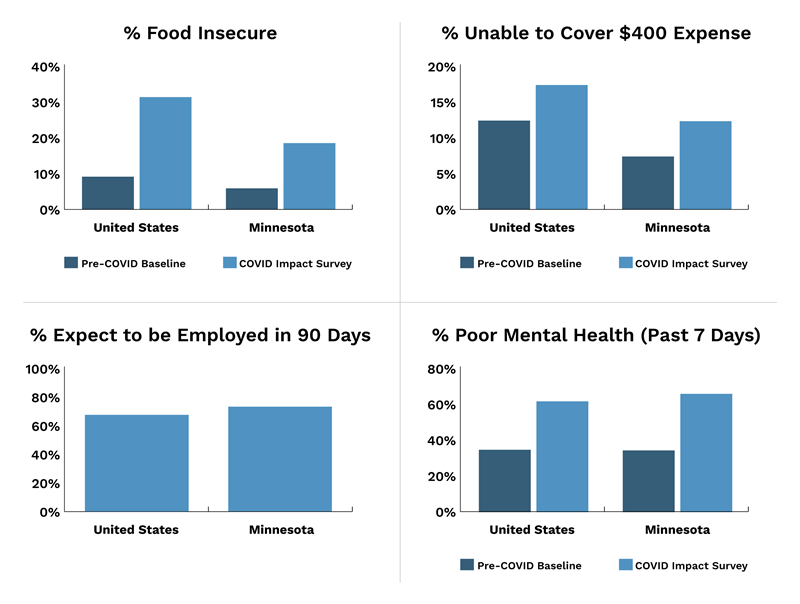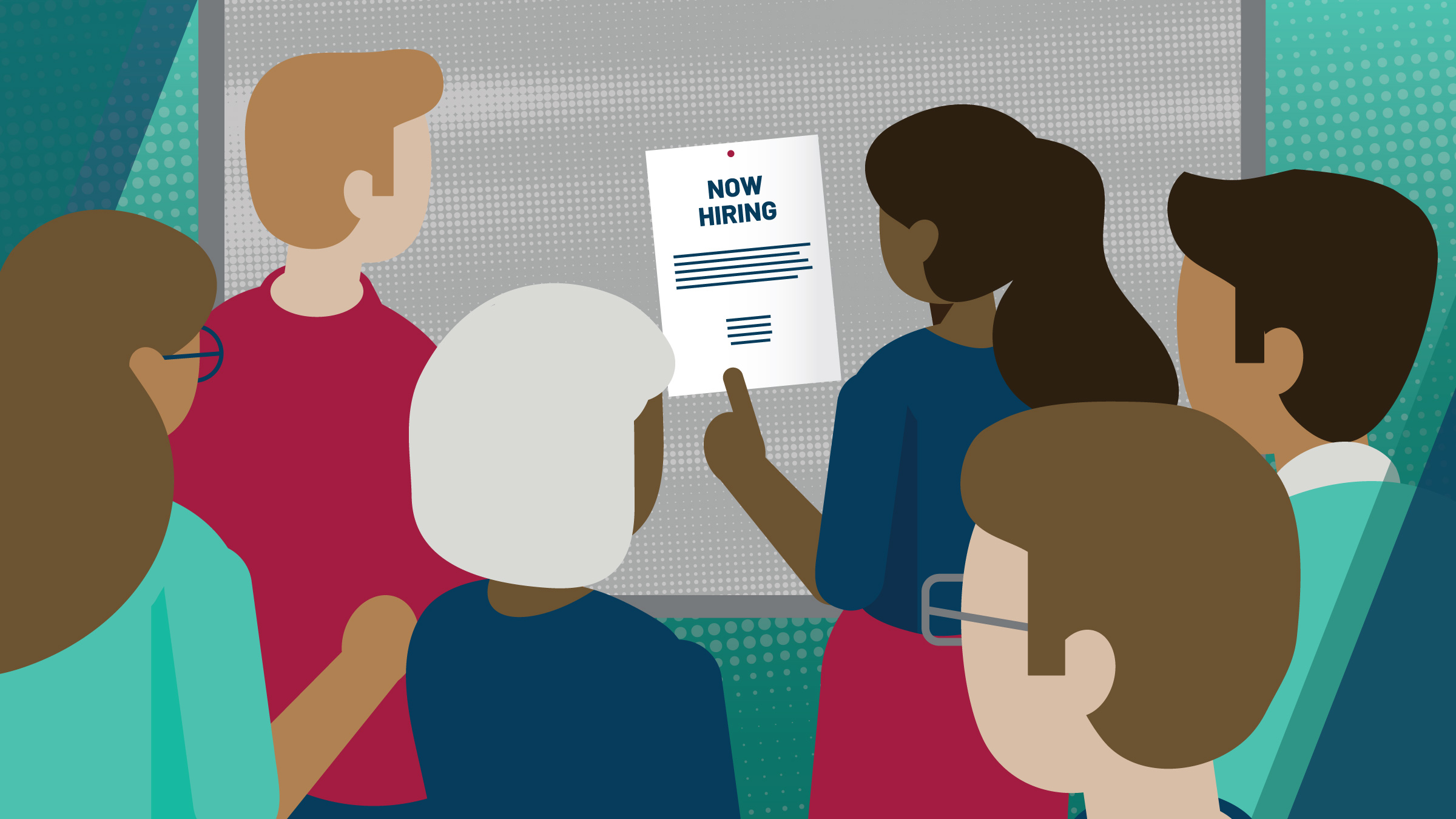In general, Minnesotans are protecting themselves against COVID-19 at rates similar to those of other Americans, despite having fewer personal connections to people with COVID-19.
- Nearly nine of 10 Minnesotans report that they are taking five or more measures to protect against the virus—about the same as Americans as a whole.
- Minnesotans are less likely to wear a mask than other Americans. Seven of 10 Minnesotans report wearing a mask compared with eight of 10 across the country.
- More than seven of 10 Minnesotans face five or more movement restrictions—slightly more than Americans as a whole.
- Minnesotans have a personal connection to a COVID-19 case—that is, a diagnosis of COVID-19 in their household or the death of a close friend or family member—at one-third the rate of Americans as a whole. Only 2 percent report a personal connection.

Job losses have disproportionately hit Minnesotans of color, and disparities in the impact of COVID-19 on Minnesota workers differ from national patterns
- More Minnesota respondents have remained employed than national respondents. The table below reports employment rates (the share of the population working for pay), which are less affected by layoffs and job search choice than unemployment rates.1
- Before the pandemic hit, nearly 70 percent of Minnesota respondents reported being employed. In April and May, the share of respondents employed fell to 54 percent, a decrease of 22 percent in the employment rate.
- Declines have been sharpest for black Minnesotans and those with other non-white, non-Latino identification (which includes Asian and Native American residents).
- The decline for black Minnesotans is particularly severe and stands out from a national pattern that shows the sharpest employment declines for Latinos.
- Employment declines were less severe for young workers than for state residents as a whole, another difference from the national pattern.
- Employment declines were also less severe for Minnesota workers with children, but research using national data shows this reverses after adjusting for age and other factors.
- Among working Minnesotans, hours declined from pre-COVID-19 levels less than for Americans as a whole.
- Groups facing smaller employment declines tended to see larger cuts in hours, suggesting a trade-off. The hours increase for black Minnesotans may indicate that remaining employment was concentrated in essential frontline services.
| Employment Rate (Pre-COVID) | Employment Rate (Apr-May 2020) | Percent Change In Employment | Percent Change In Hours, if Employed | |
|---|---|---|---|---|
| United States | 62% | 48% | -23% | -10% |
| Minnesota | 69% | 54% | -22% | -4% |
| MN-White, non-Latino | 68% | 54% | -21% | -3% |
| MN-Latino | 74% | 61% | -17% | -12% |
| MN-Black, non-Latino | 73% | 49% | -33% | 7% |
| MN-Other, non-Latino | 70% | 48% | -31% | -11% |
| MN-Living with Children | 81% | 70% | -14% | -14% |
| MN-Age 18-29 | 80% | 67% | -17% | -6% |
Well-being has declined for Minnesotans, although somewhat less than for all Americans
Since the start of the COVID-19 pandemic, Minnesotans’ well-being—including economic security, physical health, and mental health—has worsened. However, relative to U.S. averages, Minnesotans are experiencing less food insecurity and are more likely able to cover emergency expenses. Minnesotans in the labor force are also more likely to believe they will be employed in three months. The incidence of poor mental health days among Minnesotans has been similar to the U.S. average.

Survey data information for Ninth Federal Reserve District leaders
The onset of COVID-19 generated an immediate need for timely data reflecting how our communities are faring in a newly changed environment. To meet this need, the Federal Reserve Bank of Minneapolis partnered with the Data Foundation— experts in improving national statistical resources—to provide the COVID Impact Survey. This brief offers a snapshot of key facts from the CIS to help policymakers understand what it says about how Minnesota residents are faring in the COVID-19 environment.
To find out more:
- Visit covid-impact.org/results for additional results, survey questionnaire, and microdata for statistical analysis.
- Follow @minneapolisfed, Opportunity & Inclusive Growth Institute director @abigailwozniak, and @COVIDimpact.
Endnote
1 The COVID Impact Survey asks some questions that also appear on the new Census Household Pulse Survey, including employment questions. Differences between the two may be due to substantive differences in survey methods. The CIS invites Minnesotans into the survey by mail and allows phone interviews if needed. The Census Pulse invites respondents using email and text.




